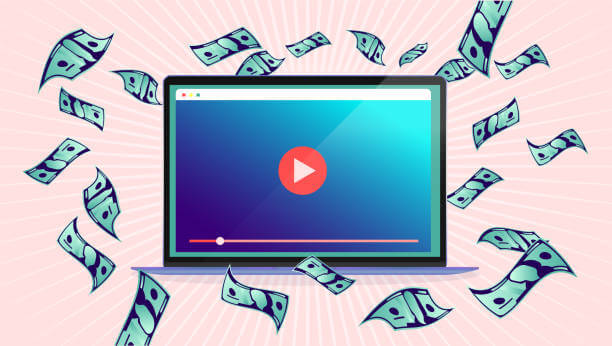In recent years, YouTube has become a powerhouse platform for content creators to not only share their passions but also earn a substantial income. With over 2 billion logged-in monthly users, YouTube offers a vast audience for creators to monetize their content through various means. If you’re eager to delve into the world of YouTube monetization, here’s a comprehensive guide to help you get started.
Understanding YouTube Monetization
YouTube offers several avenues for creators to monetize their content:
- Adsense Revenue: This is the most common way creators earn money on YouTube. By enabling monetization on your videos, you allow ads to be displayed, and you earn a share of the revenue generated from those ads.
- Channel Memberships: Creators with at least 30,000 subscribers can offer channel memberships, where subscribers pay a monthly fee in exchange for perks like exclusive content, badges, and emojis.
- Merchandise Shelf: YouTube allows eligible creators to showcase and sell their merchandise directly beneath their videos through the merchandise shelf feature.
- Super Chat and Super Stickers: During live streams, viewers can purchase Super Chats and Super Stickers to highlight their messages, with creators receiving a portion of the revenue.
Tips to Monetize Your YouTube Channel Effectively
Now that you understand the various monetization options available, here are some tips to help you maximize your earnings on YouTube:
- Create High-Quality Content: Quality is paramount on YouTube. Invest in good equipment, improve your editing skills, and strive to create engaging and valuable content that resonates with your audience.
- Consistency is Key: Regular uploads help to keep your audience engaged and coming back for more. Develop a content schedule and stick to it to maintain a loyal subscriber base.
- Optimize Your Videos for Search: Conduct keyword research to identify popular topics in your niche, and optimize your video titles, descriptions, and tags accordingly. This will help your videos rank higher in search results, increasing visibility and potential earnings.
- Promote Your Videos: Share your videos across your social media platforms, collaborate with other YouTubers, and engage with your audience to increase views and subscriptions.
- Diversify Your Revenue Streams: Don’t rely solely on Adsense revenue. Explore other monetization options like channel memberships, merchandise sales, and sponsored content to maximize your earnings potential.
Conclusion
Earning money through YouTube is a realistic goal for dedicated and creative content creators. By understanding the various monetization options available, consistently producing high-quality content, and actively engaging with your audience, you can turn your passion into a lucrative career on YouTube.

Engaging FAQs
1. How many subscribers do I need to start earning money on YouTube?
You need at least 1,000 subscribers and 4,000 watch hours in the past 12 months to be eligible for Adsense monetization.
2. Can I monetize cover songs or copyrighted content?
No, unless you have obtained the necessary licenses or permissions, you cannot monetize content that you do not own the rights to.
3. How much money can I expect to earn from YouTube?
Earnings vary widely depending on factors such as your niche, audience size, and engagement levels. Some creators earn modest incomes, while others generate millions of dollars annually.
4. Do I have to pay taxes on my YouTube earnings?
Yes, YouTube earnings are considered taxable income, so you are responsible for reporting your earnings and paying taxes accordingly.
5. Are there any age restrictions for monetizing my YouTube channel?
To monetize your channel, you must be at least 18 years old (or have a legal guardian who can handle the AdSense payments). However, you can create and upload videos at any age.
Start your journey to YouTube monetization today by implementing these strategies and staying committed to your craft. With dedication and perseverance, you can achieve your financial goals and build a thriving career on YouTube.
